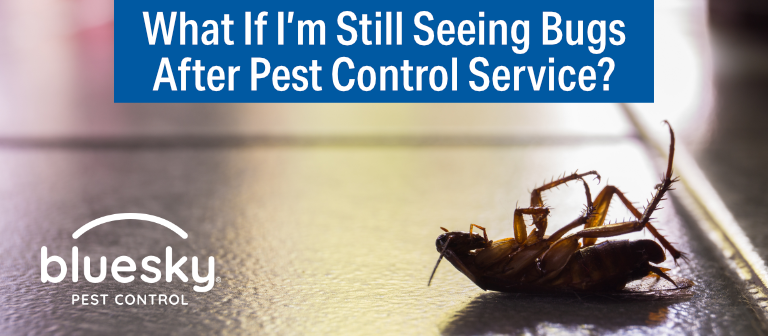Some Known Details About Eco Bed Bug Exterminators Dc
Table of ContentsThe Buzz on Eco Bed Bug Exterminators DcEco Bed Bug Exterminators Dc for BeginnersGetting The Eco Bed Bug Exterminators Dc To WorkSome Known Facts About Eco Bed Bug Exterminators Dc.The smart Trick of Eco Bed Bug Exterminators Dc That Nobody is Talking About
Due to the fact that chemicals are poisonous, they are likewise possibly hazardous to humans, animals, other organisms, and the environment. Individuals that utilize pesticides or routinely come in call with them must recognize the family member toxicity, potential health and wellness impacts, and preventative procedures to minimize direct exposure to the items they make use of. Danger, or danger, of using chemicals is the possibility for injury, or the degree of threat entailed in making use of a pesticide under an offered collection of problems.
Applicators can reduce or almost remove direct exposure-- and thus decrease risk-- by following the label directions, making use of personal safety apparel and tools (PPE), and managing the chemical appropriately. For example, more than 95 percent of all pesticide exposures originate from facial direct exposure, mostly to the hands and forearms. By using a set of unlined, chemical-resistant handwear covers, this sort of direct exposure can be virtually eliminated.
The unsafe results that take place from a single exposure by any type of course of entry are termed "acute impacts." The 4 courses of exposure are dermal (skin), breathing (lungs), oral (mouth), and the eyes. Intense poisoning is figured out by examining the dermal poisoning, breathing toxicity, and oral poisoning of guinea pig.
The Single Strategy To Use For Eco Bed Bug Exterminators Dc
Acute poisoning is gauged as the amount or concentration of a toxicant-- the a.i.-- needed to kill 50 percent of the pets in a test population. This measure is normally expressed as the LD50 (lethal dose 50) or the LC50 (lethal focus 50). Furthermore, the LD50 and LC50 values are based on a solitary dosage and are recorded in milligrams of pesticide per kilo of body weight (mg/kg) of the test pet or partly per million (ppm).
The lower the LD50 or LC50 worth of a pesticide product, the greater its toxicity to humans and pets. Chemicals with a high LD50 are the least toxic to human beings if made use of according to the directions on the product tag. The persistent toxicity of a my website chemical is identified by subjecting test pets to long-term exposure to the energetic component.
The persistent poisoning of a pesticide is harder than intense poisoning to establish via lab evaluation. Products are categorized on the basis of their family member severe toxicity (their LD50 or LC50 values). Chemicals that are identified as very poisonous (Toxicity Category I) on the basis of either oral, dermal, or inhalation poisoning have to have the signal words DANGER and toxin printed in red with a head and crossbones icon plainly showed on the front panel of the plan label.
The severe (solitary dosage) oral LD50 for chemical products in this team varies from a trace amount to 50 mg/kg. For instance, exposure of a few decreases of a material taken by mouth can be deadly to a 150-pound individual. Some pesticide items have just the signal word risk, which tells you nothing regarding the intense poisoning, just that the item can trigger severe eye damages or extreme skin irritation
Eco Bed Bug Exterminators Dc Can Be Fun For Everyone
In this classification, the intense dental LD50 varieties from 50 to 500 mg/kg. A tsp to an ounce of this material could be fatal to a 150-pound individual (bed bug spray). Pesticide items classified as either slightly toxic or relatively harmless (Poisoning Categories III and IV) are required to have the signal word CAUTION on the chemical tag

All chemical poisoning worths, consisting of the LD50, can be located on the product's Material Safety and security Data Sheet (MSDS) - bed bug exterminator. Pesticide labels and MSDS can be obtained from stores or makes. In enhancement, the majority of products likewise have details that can be discovered on the web. The signs of pesticide poisoning can vary from a mild skin irritation to coma or perhaps fatality.
People also vary in their level of sensitivity to various levels of these chemicals. Some people may reveal no response to a direct exposure that might cause extreme health problem in others (bed bug exterminator). Since of prospective wellness concerns, pesticide customers and handlers need to identify the typical symptoms and signs of pesticide poisoning. The results, or signs, of pesticide poisoning can be generally specified as either topical or systemic.
The Greatest Guide To Eco Bed Bug Exterminators Dc
Dermatitis, or swelling of the skin, is approved as the most generally reported topical result associated with chemical direct exposure. Some individuals often tend to cough, wheeze, or sneeze when exposed to pesticide sprays.
This sign normally subsides within a couple of minutes after a person is removed from the direct exposure to the irritant. Nevertheless, a reaction to a pesticide item that causes someone not just to sneeze and cough however additionally to develop extreme intense respiratory system signs and symptoms is more probable to be a real hypersensitivity or allergy.
Systemic results are quite different from topical results. They typically take place far from the original point of call as a result of the pesticide being taken in into and dispersed throughout the body. Systemic results usually include nausea, throwing up, tiredness, frustration, and intestinal tract problems. In innovative poisoning instances, the individual might experience changes in heart price, difficulty breathing, convulsions, and coma, which could lead to death.